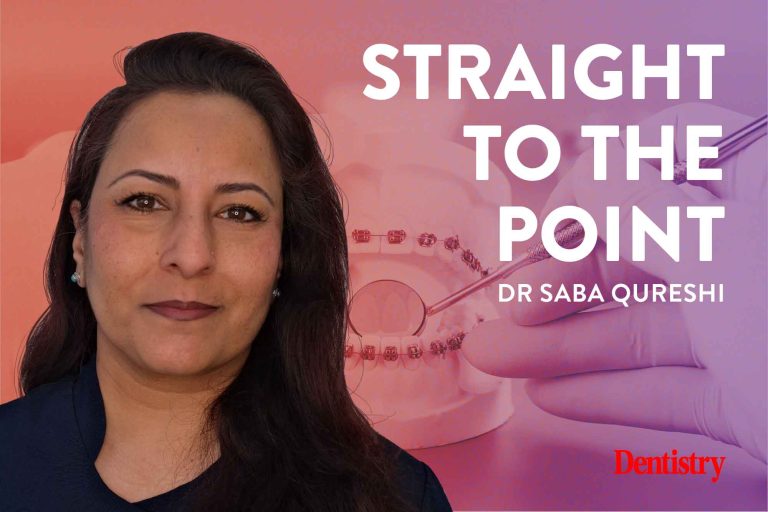From allaying fears to sharing treatment options, Saba Qureshi discusses the huge potential social media has for patients – and how it benefits dental professionals too.
Even if you’ve been living under a rock, you’d be hard pressed to ignore the impact social media has had on our daily lives.
An estimated 4.9 billion people use social media worldwide. In the UK alone, at the beginning of 2023 there were 66.11 million internet users, with 57.10 million users accessing at least one social media platform on a daily basis. This corresponds to 84.4 percent of the total population.
Social media platforms such as Facebook, Instagram, YouTube, TikTok, LinkedIn, Twitter and Snapchat are frequently visited by patients to access information on a whole range of dental/orthodontic questions.
With approximately two billion users worldwide, Instagram, YouTube and Facebook are among the most popular social media platforms in the world. In the UK, they have around 28.8 million, 57.1 million and 34.4 million users respectively.
Huge potential
These platforms have enormous potential for dental care professionals to educate current and potential patients as these platforms allow sharing of health information as well as patient experiences on health-related topics.
It has been shown that among orthodontic patients there is an awareness, uptake and willingness to engage with social media in support of treatment, which can be used to our advantage.
But to do that, we need to understand what information the general public is turning to social media to clarify. Studies have shown that the main reasons patients reported searching social media were to get information about orthodontic treatment results, types of appliances, and data about the practical aspects of treatment.
It’s not hard to see the appeal of platforms like Instagram and Snapchat that allow access to short, engaging videos that can be used to research information about orthodontic and dental treatments.
As the saying goes, a picture is worth a thousand words. As a profession, dentistry has fully embraced clinical photography and is therefore ideally placed to share content that can impart dental/orthodontic information and knowledge, especially through a user-friendly platform like Instagram.
One can post in various ways by showing clinical photos, x-rays or even short videos. Instagram also uses carousels, which allow viewers to quickly slide between images that reveal step-by-step procedures, such as before and after pictures of Invisalign treatment. This can prove to be a powerful marketing and training tool.
So how can this benefit patients?
Education
It is well documented that 40-80% of medical information provided by healthcare professionals is immediately forgotten and nearly 50% of what is remembered is incorrectly recalled.
With this in mind, providing a variety of information delivery methods on different social media platforms allows our patients to engage with content they find interesting, thereby helping to retain information, e.g. oral health guidelines.
Social media also provides a space where dental professionals can debunk dental/orthodontic myths.
Treatment options
Patients can view current orthodontic treatment options available and research them prior to consultations.
This can be helpful as it can help patients focus on which aspects of the nails are most important to them. aesthetics, duration of treatment, comfort, etc. This will allow the orthodontist to adjust treatment accordingly, where possible.
However, if patients arrive with fixed ideas about what brace they want and how long they expect treatment to take based on what they’ve seen on social media, but these don’t align with the complexity of their case, convincing them otherwise may it’s kind of a battle.
Clearing the fears
Dentists have never been very popular and many patients still experience dental anxiety or phobias.
For some of these patients, attending dental procedures in advance, such as fitting Invisalign or braces can act as a refreshed and updated version of the old classic “say, show, do” helping them feel more comfortable. and prepared for the expected treatment.
Access real patient content
Social media platforms are sharing networks, enabling patients to share their treatment experiences (both positive and negative) before, during and after treatment. This gives others a unique insight into orthodontic treatment in real time.
While this may vary from person to person due to different brace choices, pain levels and individual variations, they can prove valuable to those seeking orthodontic treatment.
Take social media seriously
Of course, social media is a useful tool for dentists/orthodontists as well, allowing us to showcase our expertise, happy patient testimonials and professional accolades. And let’s not forget the opportunities for professional support, networking and sharing educational content (at no cost to the user) around the world that these platforms offer us.
I strongly believe that people buy people, not services, and these platforms also allow us to show our personality, allowing current and potential patients to feel comfortable in their interactions with us.
But a word to the wise, social media is not without its risks.
It is imperative that dental professionals obtain valid consent from patients where they publish specific patient information. The General Dental Council (GDC) is clear that all online discussions, images and media should be anonymous and to ensure that no patient information is included in them without consent.
There is a lot of poor quality information about dentistry and orthodontic treatment on social media platforms. As professionals, we need to address this with informative, evidence-based content that can benefit our patients and the wider population.
Social media participation is an integral part of the daily lives of many of our patients – it’s time to take it seriously.
Catch up on past Straight to the Point columns:
Follow Dentistry.co.uk on Instagram to keep up with all the latest dental news and trends.

